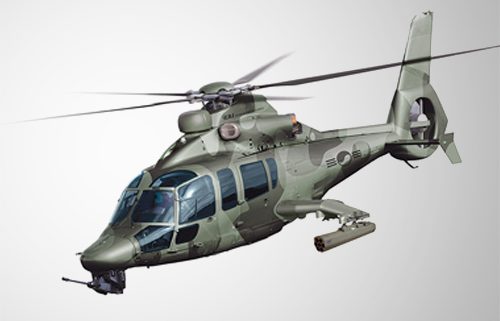Recently NLR has performed the third test of a model of the South Korean LAH helicopter in the Low-Speed Tunnel (LST) of German-Dutch Wind Tunnels (DNW). The design was produced for Korea Aerospace Industries (KAI), using 60 percent 3D-printed plastic elements. Since early 2016 the helicopter model has been subjected to various wind tunnel tests at all stages of its development, from the initial ‘bare bones’ standard configuration to the current highly detailed model, which includes components like antennas and wire cutters.
The production and testing of wind tunnel models is part of NLR’s strategy to acquire more OEM contracts, and is a direct result of the close relationship that KAI and NLR have built up over the past few years. In spring 2016, for instance, NLR evaluated the Fly-By-Wire (FBW) system of the KUH Surion helicopter in a simulator facility in Seoul. In this test, NLR assessed if the control system was capable of slalom flight manoeuvres, hovering, and making the aircraft turn on its own axis. NLR is also assisting the South Korean helicopter manufacturer in the development of the KUH-1M model, which will be capable of landing on sea-going vessels, and is contributing to the test programme for the civil-use Surion helicopter, which is designed for flight conditions involving ice formation.
NLR enjoys an excellent worldwide reputation in the field of wind tunnel models. Major aircraft manufacturers frequently commission the organization to construct models and test them at DNW’s facilities or in other wind tunnels. They do so because NLR — unlike many equipment manufacturers — is capable of integrating large numbers of complex sensors and operational drive systems in its models, which can therefore deliver actual power and perform real flight manoeuvres. In addition, the lead time for the construction of wind tunnel models is very short at NLR compared to other knowledge organizations. One of the ways in which NLR has managed to speed up the process is by immediately starting construction work on the model, even if the design has not yet been finalized. After manufacturers have completed the design of their new aircraft, they therefore lose no valuable time in waiting for a wind tunnel model in order to verify the design.



